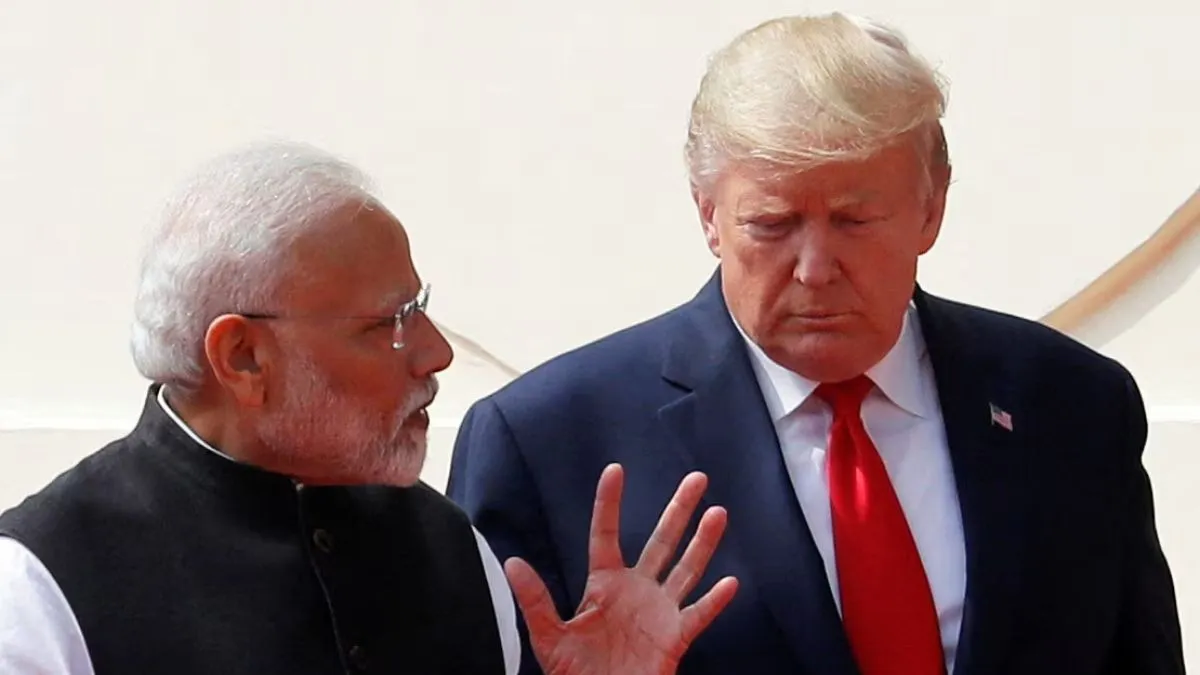Trump Tariff On India: In a move that threatens to upend US-India trade relations, US President Donald Trump signed an executive order levying an additional 25 per cent ad valorem tariff on Indian products based on the ongoing import of Russian oil by India. The order, released on the White House website on Wednesday, blames New Delhi for indirectly subsidizing the Russian economy in times of the war in Ukraine, putting into effect what is described as one of the toughest economic measures against an Asian trading partner.
The latest measure brings the total US tariff burden on Indian goods to nearly 50 per cent , making Indian exports to America significantly more expensive and less competitive. The executive order explicitly targets Indian imports allegedly benefiting from Russian oil, including those routed indirectly through third countries. The order defines “Russian Federation oil” broadly, including any crude or petroleum products extracted, refined, or exported from Russia. Even indirect imports, purchases routed through third countries, fall under this ban if the origin can be traced back to Russia.
What Is Ad Valorem Duty?
An ad valorem duty is an import tax charged as a percentage of the goods’ value. In contrast to fixed-rate duties, the tax goes up with the product’s value that is being imported. Here, the US will impose an additional 25 per cent tariff on the determined customs value of Indian products into the US market—essentially doubling the price after an initial 25 per cent duty was declared in July. This would harshly affect industries where India has traditionally had robust demand in the US, including textiles, pharmaceuticals, auto components, electronics, and gems & jewellery.
“America has concluded that it is appropriate and necessary to impose a 25 per cent tariff on Indian imports to punish ongoing purchases of Russian oil,” the White House release said. The administration contends that India’s trade in energy with Russia subverts US action to economically and diplomatically isolate Moscow.
What It Means For India’s Economy?
Based on an internal government estimate quoted by Reuters, almost USD 64 billion worth of India’s yearly exports to America, almost 80 per cent of the total Indian exports to the US, would be impacted, with Indian exporters risking “potential export losses” from sudden price disadvantages in the American market. Ajay Srivastava, co-founder of the Global Trade Research Initiative, cautioned that Indian exports to the US might drop by 30 per cent this fiscal to USD 60.6 billion from $86.5 billion in the previous year.
Sector-Wise Impact:
• Textiles: India’s cotton garment exports can expect lower demand because of increased landed cost in the US
• Pharmaceuticals: India, the largest global supplier of generic medicines to the US, may witness a significant drop, impacting its behemoth generic drug manufacturing sector.
• Gems & Jewellery: Tariffs could hamper India’s exports in this high-margin industry, totally reliant on the American market.
• Electronics & Auto Components: With India becoming a manufacturing hub for global giants, this might disrupt investment pace and supply chain commitments.
• Steel, Leather, Chemicals & Seafood: These industries may also experience declining returns and exports under the new system.
Political and Strategic Implications
This tariff escalation comes just days after India confirmed Prime Minister Narendra Modi’s visit to China later this month for the Shanghai Cooperation Organisation (SCO) Summit—his first in over seven years. The timing of Trump’s decision hints as a signal to India to distance itself from both China and Russia. India has strongly criticised the United States’ decision, calling the move “unfair, unjustified and unreasonable.” The Ministry of External Affairs (MEA) issued a sharp response on Wednesday, hours after US President Donald Trump signed an Executive Order targeting Indian exports, citing India’s continued purchase of Russian oil.
ALSO READ: Trump Imposes 25 per cent Additional Tariff On Indian Imports Over Russian Oil Purchase, Total Levy Now At 50 per cent
MEA spokesperson Randhir Jaiswal expressed deep disappointment over the US action, noting that several other nations are also importing oil from Russia in their own national interest. “It is extremely unfortunate that the US chose to impose additional tariffs on India for actions that several other countries are also taking in their own national interest,” Jaiswal said in an official statement. He added, “We reiterate that these actions are unfair, unjustified, and unreasonable. India will take all actions necessary to protect its national interests.”
In a sharp response earlier this week, India’s Ministry of External Affairs said the US and the EU were “unfairly targeting” India while importing critical resources themselves from Russia. “The targeting of India is unjustified and unreasonable,” the ministry said, adding that New Delhi will take “all necessary measures to safeguard its economic interests.” India has repeatedly asserted that its energy partnership with Russia is vital to national interest and energy security, particularly against the backdrop of increasing global crude prices and supply chain uncertainties.
ALSO READ: India Hits Back After US Imposes 25 per cent Additional Tariff On Indian Goods, Calls Move ‘Unfair And Unjustified’
US-India Trade At Risk?
With India-US bilateral trade having crossed USD 120 billion in recent years, the move to slap punitive tariffs on Indian products has the potential to undermine this budding relationship. The decision is one of the strongest tariffs imposed by the Trump administration on any Asian ally, which has raised alarm globally regarding protectionism and politicized trade policy. Trump, speaking in a CNBC interview on Tuesday, defended the decision, saying, “India has the highest tariffs of anybody… If they’re going to fuel the Russian war machine, I’m not going to be happy.” The action is also likely to have ripple effects in the world’s supply chains, particularly for businesses that depend on Indian production.
